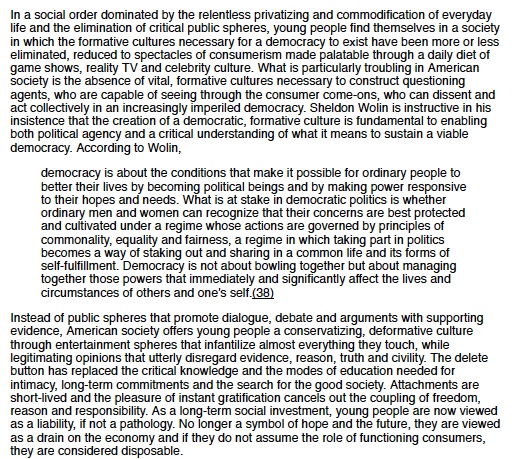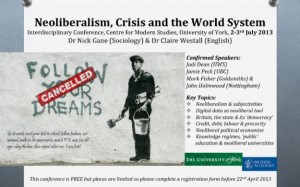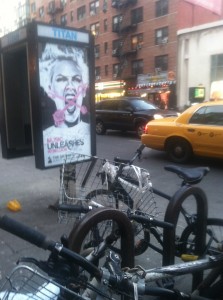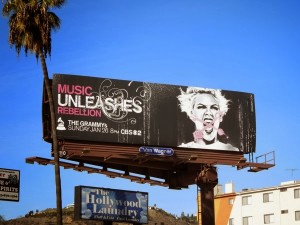It’s like a jungle sometimes it makes me wonder
How I keep from going under
It’s like a jungle sometimes it makes me wonder
How I keep from going under
Broken glass everywhere
People pissing on the stairs, you know they just don’t care
I can’t take the smell, I can’t take the noise
Got no money to move out, I guess I got no choice
Rats in the front room, roaches in the back
Junkies in the alley with the baseball bat
I tried to get away, but I couldn’t get far
Cause a man with a tow-truck repossessed my car
Chorus:
Don’t push me cause I’m close to the edge
I’m trying not to lose my head, ah huh-huh-huh
[2nd and 5th: ah huh-huh-huh]
[4th: say what?]
It’s like a jungle sometimes it makes me wonder
How I keep from going under
It’s like a jungle sometimes it makes me wonder
How I keep from going under
Standing on the front stoop, hangin’ out the window
Watching all the cars go by, roaring as the breezes blow
Crazy lady livin’ in a bag
Eating out of garbage pails, used to be a fag-hag
Said she danced the tango, skipped the light fandango
The Zircon Princess seemed to lost her senses
Down at the peepshow, watching all the creeps
So she can tell the stories to the girls back home
She went to the city and got social security
She had to get a pimp, she couldn’t make it on her own
[2nd Chorus]
My brother’s doing bad on my mother’s TV
She says: “You watch it too much, it’s just not healthy!”
“All My Children” in the daytime, “Dallas” at night
Can’t even see the game or the Sugar Ray fight
The bill collectors they ring my phone
And scare my wife when I’m not home
Got a bum education, double-digit inflation
I can’t take the train to the job, there’s a strike at the station
Neon King Kong standin’ on my back
Can’t stop to turn around, broke my sacrophiliac
A mid-ranged migraine, cancered membrane
Sometimes I think I’m going insane, I swear I might hijack a plane
My son said: “Daddy I don’t wonna go to school
Cause the teacher’s a jerk!”, he must think I’m a fool
And all the kids smoke reefer, I think it’d be cheaper
If I just got a job, learned to be a street sweeper
I’ll dance to the beat, shuffle my feet
Wear a shirt and tie and run with the creeps
Cause it’s all about money, ain’t a damn thing funny
You got to have a con in this land of milk and honey
They pushed that girl in front of the train
Took her to the doctor, sewed her arm on again
Stabbed that man right in his heart
Gave him a transplant for a brand new start
I can’t walk through the park, cause it’s crazy after dark
Keep my hand on my gun, cause they got me on the run
I feel like a outlaw, broke my last glass jar
Hear them say: “You want some more livin’ on a seesaw?”
[4th Chorus]
A child is born with no state of mind
Blind to the ways of mankind
God is smiling on you but he’s frowning too
Because only God knows what you’ll go through
You’ll grow in the ghetto, living second rate
And your eyes will sing a song of deep hate
The places you’re playin’, where you stay
Looks like one great big alley way
You’ll admire all the number book takers
Thugs, pimps, pushers and the big money makers
Driving big cars, spending twenties and tens
And you wanna grow up to be just like them, huh,
Smugglers, scrambles, burglars, gamblers
Pickpockets, peddlers even panhandlers
You say: “I’m cool, I’m no fool!”
But then you wind up dropping out of high school
Now you’re unemployed, all non-void
Walking ’round like you’re Pretty Boy Floyd
Turned stickup kid, look what you’ve done did
Got sent up for a eight year bid
Now your manhood is took and you’re a may tag
Spend the next two years as a undercover fag
Being used and abused to serve like hell
Till one day you was found hung dead in a cell
It was plain to see that your life was lost
You was cold and your body swung back and forth
But now your eyes sing the sad, sad song
Of how you lived so fast and died so young
Don’t push me ’cause I’m close to the edge
I’m trying not to lose my head
It’s like a jungle sometimes it makes me wonder how I keep from going
under
It’s like a jungle sometimes it makes me wonder how I keep from going
Under
Yo Mell, you see that girl there?
Yo, that sounded like Cowboy man
Cool
Yo, what’s up Money?
Yo, where’s Cooly an Raheim?
They is downstairs coooling out
So what’s up for tonight y’all?
We could go down to Phoenix
We could go check out “Junebug” man
Hey yo, you know that girl Betty?
Yeah man
Come on, come all man
Not like it
That’s what I heard man
What’s this happening, what’s this?
What’s goin’ on?
Freeze
Don’t nobody move or nothin’
Y’all know what this is (What’s happend?)
Get ’em up, get ’em up (What?)
Oh man, we’re (Right in there) Grandmaster Flash and the Furious Five
What is that, a gang?
No
Shut up
I don’t wanna hear your mouth
Shut up
Officer, officer, what is the problem?
You the problem
Hey, you ain’t gotta push me man
Get in the car, get in the car
Get in the god…
I said, “Get in the car”
Why is he?
Songwriters: MARTIN/SHAPIRO/NESLER
The Message lyrics © Sony/ATV Music Publishing LLC, EMI Music
Publishing, Warner/Chappell Music, Inc., Peermusic Publishing





